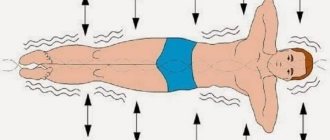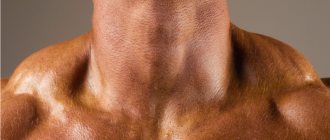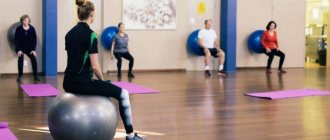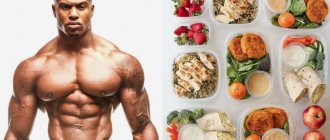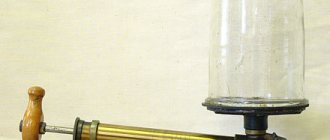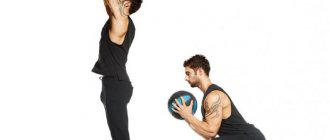Hello, dear readers!
Today we’ll look at how to train 6 days a week and not overtrain! 6-day training is a very voluminous type of training, so the training intensity (working weights) should be very moderate.
From the history of bodybuilding, we know legendary athletes such as Arnold Schwarzenegger, Ronnie Coleman, Jay Cutler, who used a six-day workout and one day for rest. Their programs should be viewed with great caution. Since they are all professional athletes and used anabolic steroids, which allowed them to train so often, for a long time and hard, without disrupting the functionality of various body systems. It was steroids that saved them from overexertion and overtraining.
Now, in the age of development of fitness and gyms, some people use 6-day workouts, but not everyone, even a physically trained person, can use three strength training and three cardio workouts. I would like to note that famous bodybuilding athletes could not withstand this type of training for a long time.
For those who, despite everything, decide to use this method, you need to know the following.
Important components for the successful development of 6-day training are:
1. Drawing up a balanced training program; 2. Correct selection of loads in terms of weights and number of approaches and repetitions; 3. 8-10 hour sleep; 4. Regular balanced nutrition.
Let's look at this in more detail. If your goal is to build muscle and improve the contours of your body, then there are 2 options for this.
Option 1 – work out each muscle group once a week. That is, an athlete works out one muscle group in one workout. It is recommended to perform 15-25 approaches in one session, and spend no more than 60 minutes on the strength part.
Option 2 – a muscle group is worked out 2 times a week. It should be noted that the muscles will be given 3 to 4 days to rest, so it is recommended to use 10 to 15 approaches per workout so as not to overload the body, spending no more than 45 minutes on the strength part.
With the second option, it is very important not to fall into overtraining. I recommend including in your training elements both for hypertrophy and pumping up your functional qualities. Since, if you train only for hypertrophy, then muscle growth will be faster, but untrained ligaments will limit muscle innervation and further progression of loads will be impossible.
During a six-day workout, sleep is of great importance, thanks to which the body recovers. Ideally, you should spend 8-10 hours sleeping. It is best if sleep is divided into two phases - night (7 - 8 hours) and daytime (1 - 2 hours).
I would also like to note the fact that when training according to the six-day training scheme, you need to devote quite a lot of time to it. Therefore, this training program is not suitable for people with a busy work schedule.
It is also recommended to exclude stressful situations. If, for example, when introducing this type of training in your life, various things arise that require a lot of mental stress, then it is better to postpone training according to such a complex schedule for another time or train according to shortened programs with high intensity. Large weights with moderate volume calm the nervous system.
Nutrition
An equally important aspect of recovery is nutrition, which ensures muscle growth. During the day, it is necessary to receive 5-6 meals a day for the body to properly recover. The diet is quite simple, the main thing is that food is supplied in no less quantity than during normal exercise, and is balanced in the quantitative composition of proteins, fats and carbohydrates. By the way, the amount of carbohydrates should be 3-5 grams per kilogram of body weight. Fats should make up about 10-15% of the total diet. It is recommended to consume fish oil two to three times a year for a month.
Six day split rules
As an option for a six-day split, you can use a “straight pyramid”, during which the athlete increases the working weight from approach to approach, while only one “failure” repetition is allowed in the last approach. At the same time, in basic exercises, thanks to which the progression of loads is ensured, the last repetition in the last approach should be “failure”.
It is recommended to use 3 to 5 working sets, starting with 12 repetitions per set and ending with 6. In intermediate sets, you can use any number of repetitions from 6 to 12, gradually reducing them and increasing the working weight.
Training program for 6 days a week for girls
The exercise program combines strength and cardio training and is designed for girls who want to lose weight and tone their muscles. Level of training: advanced. The program combines three strength training and three cardio training, with one day of rest. Choose cardio workouts as you wish.
Monday - chest and triceps
Barbell press at an angle of 45 degrees 4 x 6-12 Dumbbell bench press on a horizontal bench 4 x 6-12 Barbell bench press on a horizontal bench with a narrow grip 3 x 8 Hand crossover 4 x 6-12 French bench press 3 x 8 Block row downwards 3 x 12
Tuesday - Cardio and Abs
We do 40-60 minutes of cardio, and at the end of the workout, 10 minutes of abdominal exercises.
Wednesday - back and biceps
Wide-grip pull-ups in the “gravitron” 3 x 8 Vertical pull-down 3 x 8 Horizontal pull-down 3 x 8 Barbell curl for biceps 3 x 8 Dumbbell curl for biceps on a 60-degree bench 3 x 12
Thursday - cardio and abs
We do 40-60 minutes of cardio, and at the end of the workout, 10 minutes of abdominal exercises.
Friday - legs and shoulders
Squats with a barbell 3 x 8 Romanian deadlifts 3 x 12 Leg curls in a machine 3 x 15 Leg extensions in a machine 3 x 15 Calf raises with a barbell on the shoulders 3 x 20 Standing barbell press 3 x 8 Dumbbell lateral flyes 3 x 12 Dumbbell flyes to the sides in an inclination 3 x 12
Saturday - cardio and abs
We do 40-60 minutes of cardio, and at the end of the workout, 10 minutes of abdominal exercises.
Sunday is a day off!
A set of exercises with dumbbells
1. Alternate biceps curls. 2. Alternate biceps curls with a reverse grip. 3. Arms to the sides, alternate bends. 4. Arms to the sides, bending with both hands. 5. Raising your arms to the sides while standing. 6. Standing dumbbell press. 7. Alternately lift the dumbbells in front of you. 8. Arms to the sides, dumbbell turns. 9. Arms to the sides, dumbbell rotation. 10. Arms to the sides, rotating the dumbbells in the other direction. 11. Lunges with the right leg, left arm. 12. Lunges with left leg, right arm. 13. Push-ups. 14. Push-ups with a tourniquet. 15. Press: raising the body from a lying position. 16. Squats with dumbbells. 17. Side bends.
Exercise 1. Alternate biceps curls with a straight grip. Take the dumbbells in your hands, and take the starting position “at attention”, as described in the introductory part to these exercises (see instructions).
Now bend your knees slightly and turn the inside of your arms all the way forward. In exercises with light dumbbells, the knees should be bent so that the leg muscles can feel the tension in the upper limbs. Squeeze the handles of the dumbbells and tense your arm muscles; then alternately bend and extend each arm at the elbow until the dumbbell is in line with your shoulder, the back of your hand in front, your shoulders and elbows down, and your arms close to your sides. In the lower position, straighten your arm to its full length and repeat the movement until the muscles ache. This exercise will mainly develop the biceps flexor and triceps extensor muscles. Exercise 2. Alternate biceps curls with a reverse grip. The same exercise as the first, except that the back of the hands and forearms are directed forward, and when the latter are bent at the elbow, the joints of the hand are close to the shoulder. The alternative movement of elbow flexion and extension should be performed rhythmically but vigorously until the flexor and extensor muscles become firm. The action will have a stimulating effect on the respiratory system and blood circulation.
Exercise 3. Arms to the sides, alternate bends. Raise your arms to your sides to full length, at shoulder level. Turn the inside of your forearms up, and alternately bend your elbows toward your head until the dumbbell is above your shoulder. Keep your arms at shoulder level, do not let them drop, and in a straightening movement, fully extend your arms and tense your muscles. The main muscle that works here, besides the biceps and triceps, is the deltoid muscle, which covers the shoulder. The effect of alternating arm curls is perhaps more beneficial than having both arms bent at the same time. The main advantage is that one arm rests for a moment, and does not overstrain the heart, increasing blood circulation.
Exercise 4. Arms to the sides, bending with both hands. The same exercise as the previous one, however, bend your arms at the same time. The exercise can be modified to benefit: lean back slightly and tilt your head down, forearms curling inward toward your shoulder, in this position with the dumbbells pointing outward from your armpits. The exercise develops biceps, triceps and deltoid muscles. It also stimulates breathing and accelerates blood flow.
In regular alternation of movements, such as here and elsewhere in this series, the student should try to keep the rhythm, because rhythmic movement is performed automatically, and consequently reduces the feeling of fatigue, freeing the mind from the worries of muscular action. However, the habit of concentrating attention must be formed before the movement becomes automatic.
Exercise 5. Raising arms to the sides. At the same time, move your pelvis and shoulders forward, bending your upper back, raise your arms in front of you to the level of your chin, and keep your elbows straight. From this position, simultaneously deftly move both arms back behind the shoulder line. Bring them quickly back forward again, and repeat the opening movement as often and vigorously as you can. This exercise is designed to open the chest, give mobility to the pectoral muscles and shoulder girdle. Increase blood flow to the organs of the chest and head.
Exercise 6. Standing dumbbell press. Bend your arms toward your shoulders, palms facing in, elbows close to your sides. Raise your arms vertically, one at a time, trying to stretch them above your head to their full length. The head and body are straight, the chest is straightened. Muscles worked in this exercise: biceps, triceps, deltoid, trapezius, lats and other muscles on the back and sides. Their action opens the chest and increases its mobility.
Exercise 7. Alternately lifting dumbbells in front of you. Hands holding dumbbells rest lightly on the front of your thighs, knuckles facing out, knees bent, chest pulled in and down, back slightly arched. Raise your straight arms alternately, forward and up, to the line with the top of your head, lowering one arm and raising the other. Maintain this exercise as vigorously as possible, while keeping your lungs breathing absolutely freely and unimpeded. The exercise increases the mobility of the shoulder joints, and especially strengthens the anterior deltoid, latissimus and pectoral muscles.
Exercise 8. Arms to the sides, dumbbell turns. Raise your arms to the sides to shoulder level, keeping your muscles tense all the time. At the same time, rotate your hands with dumbbells as far as possible along the axis of the wrist, repeat until the muscles are tired. The exercise can be supplemented by bending the wrist back and forth. Make sure that your arms do not fall below shoulder level, and you are not allowed to include the elbow joint: the movement is performed entirely with your wrists. This exercise is useful for strengthening and flexibility of the wrist muscles.
Exercise 9. Arms to the sides, dumbbell rotation. Lift the dumbbells by the spheres or edges, grasping them firmly with your palm like a ball. Now raise your arms to the sides to shoulder level. In this position, rotate the right dumbbell from left to right, and the left dumbbell from right to left, using a circular motion of the wrist. Continue the exercise until your muscles get tired. The rotational movement is performed entirely by the wrist and benefits numerous muscles of the forearm.
Exercise 10. Arms to the sides, rotating the dumbbells in the other direction. The same movement, but rotating the dumbbells “forward” - the right hand should be from right to left, and the left hand from left to right. This exercise will give flexibility to the muscles of the forearm, and give them strength and endurance.
Exercise 11. Lunges with right leg, left arm. Place dumbbells on the floor where they lie along the outside of each leg, with the center of the handle in line with your toes. Take dumbbells and stand at attention, head and body straight, knees bent. Turn your heel half a turn to the left, your toes at an angle of 60 degrees; The body should rotate on the hips, maintaining as much as possible the first position. At the same time, bring your left forearm to your waist, at a right angle to your body; take a good step forward with your right foot, and lunge forcefully with your left arm in the same direction, as if throwing a strong punch, and come back quickly. Repeat the movement until the muscles are well tired, the right arm remains tense. As you return, bring your elbow back and chest forward. The muscles involved in this exercise are: anterior deltoid, biceps, triceps, serratus anterior, and pectoralis major. When the body is rotated at the hips, the pulmonary movements are beneficial to the abdominal muscles and promote circulation in the area.
Exercise 12. Lunges with left leg, right arm. Same movement, now using the right arm and left leg. Half a turn will therefore be to the right. In these movements, circulation and breathing are very helpful, inhaling as the arm moves backward and exhaling as you push forward.
Exercise 13. Push-ups. This exercise is performed without dumbbells. Support the body rigidly on straightened arms and toes; then lower your body by slowly bending your elbows until you reach a lying position, and raise it by straightening your arms, repeating the movement as many times as possible. Be sure to keep the body and lower limbs rigidly straight and not touch the floor. The exercise is useful for strengthening all the muscles of the body and expanding the chest. Beginners should perform push-ups gently until the biceps and triceps are very well trained. Then you should stretch your body in a lying position, horizontally forward, as far as possible.
Exercise 14. Push-ups with a tourniquet. This exercise is the same as No. 13, only made more difficult by the tension of rubber straps that surround the neck and, through the force of resistance, increase the development of the arms in an attempt to lift the body from a lying position.
Exercise 15. Raising the body from a lying position. This exercise is designed to strengthen the abdominal muscles, and has an important effect on digestion. First performed without dumbbells, then with light weight dumbbells. Lie on your back on the floor, on a sofa or bench, in full height, arms at your sides, fix your legs under some weighting material (sofa, barbell); then raise the body on the hip joints from a lying position, and slowly lower it again to a horizontal position, repeating the movement until the abdominal muscles feel the tiring effect of the exercise. After some time, when the student has become accustomed to the tension, the exercise can be made more difficult by taking dumbbells in each hand, and while lying down, raise your arms straight behind your head. The exercise can also be performed without weighting the legs. Before lifting your body, take a deep breath and exhale as you lower it. When lifting, in a sitting position, the body should also be bent forward, as far as possible towards the legs. With dumbbells in your hands, it will also be useful to cross your wrists above your head, and thus bring your body up and forward, as if your head is locked in your outstretched arms and moves with them. For people who are overweight and tend to be overweight, exercise will be very beneficial, increasing blood circulation, burning fat, and the exercise itself prevents the formation of fat.
Exercise 16. Squats with dumbbells. This exercise is designed to develop the hip extensors. Hold a dumbbell in each hand and stand at attention with your body straight, head up, chest out, and shoulders and hips well back. Bend your knees and lower your body vertically toward your heels, keeping your back straight and chin tucked in. Return to the starting position and repeat until the muscles become sore. This exercise develops the body well and gives flexibility to the knee joints. Make sure that your body does not sway or lean. After a pause, you can modify by lifting your heels and squatting on your toes, keeping a rigid, straight position, and rising as high as possible in each movement without losing balance. This movement will greatly benefit your calf muscles; it will also give elasticity to your feet and ankles.
Exercise 17. Side bends. This exercise can be performed with or without dumbbells. From a standing position, slowly bend your torso at the hip joint, alternately left and right, with your hand or dumbbell lightly pressed against the outside of your thigh and sliding down until it reaches the bend of your knee. With one hand touching the side of your knee, use your other hand to lift the dumbbell toward your armpit. The exercise is beneficial for the oblique muscles, abdominal muscles, and other muscles that support and protect the sides of the abdomen. This will also give flexibility to the spine and increase blood circulation, mainly along the supply veins of the stomach and liver.
A set of exercises for men and women
When performing exercises with free weights, men should prefer barbells, and women should prefer dumbbells.
Monday - back
Deadlift 4 x 8 Barbell row to the waist 4 x 8 Lower block row 4 x 8 Hyperextension 2 x 15
Tuesday - chest
Bench press 4 x 8 Incline press 4 x 8 Dumbbell flyes 4 x 12
Wednesday - biceps
Barbell curl for biceps 5 x 8-12 Dumbbell curl for biceps on a 60 degree bench 3 x 8-10
Thursday - cardio
We do 40-60 minutes of cardio, and at the end of the workout, 10 minutes of abdominal exercises.
Friday - triceps
French press 4 x 8 Standing dumbbell press 4 x 8
Saturday - legs
Squats 4 x 8 Leg press 2 x 15 Romanian deadlifts 4 x 8
The 6-Minute Workout That Can Replace an Hour of Fitness at the Gym
In this master class, we will learn an exercise that is so universal that it can replace a full-fledged workout if you are limited by time or cannot afford to waste energy on active physical activity. Although this is certainly not the main value of this exercise.
If you find 20-30 minutes to master it the way we will show you in this master class, do not miss a single nuance and use the method of pedagogical self-control when performing it, and then begin to practice it regularly at least a couple of times a week, That…
Firstly, your body will become strong, flexible and resilient because you will be able to:
- Strengthen and restore the elasticity of muscles, ligaments and tendons throughout the body from head to toe;
- Improve flexibility and mobility in joints, especially in the lumbar and thoracic spine;
- Ensure blood flow to all (including remote) parts of the body, which will improve the functioning of the heart and internal organs;
- Increase the range of motion of the diaphragm, which will provide massage to the abdominal organs and improve lung function;
- Improve the functioning of the vestibular apparatus and cerebral circulation;
- In general, you will be able to maintain your body in good physical shape without excessive effort.
Secondly, you will acquire a valuable combat skill...
...which will definitely not be superfluous in your life, because you will learn to better control your body through a conscious approach to physical activity.
Well, thirdly, you will take the first important step towards masterful control of your body.
If you are already familiar with this exercise, then after completing the master class you will be able to check whether you are performing all the elements correctly, perhaps correct something in your technique or understand how to perform it more effectively, for example, by increasing the amplitude of movements, and You'll also learn a simple technique for teaching this exercise to someone else.
So let's get straight to practice.
In this video, we taught you the “Circle of Life, or Star” exercise at the basic level of technique. But in order to get the most out of its practice, we need to go into some detail. This is exactly what we will do in the next video.
In the final video of our master class, we have collected a short clip from the seminars, which shows how this exercise can be used for practical purposes.
Now let's briefly summarize what we have learned so far.
In this master class, we learned a wonderful exercise that will allow you to keep your body in great shape in just 5-10 minutes a day.
Because his practice affects almost all the main systems of our body .
With it you can:
- Ensure blood flow to all (including remote) parts of the body, which will improve the functioning of the heart and internal organs;
- Strengthen and restore the elasticity of muscles, ligaments and tendons;
- Improve flexibility and mobility in joints;
- Increase the range of motion of the diaphragm and improve lung function;
- Improve the functioning of the vestibular apparatus and cerebral circulation;
- You will also acquire a valuable combat skill and take the first important step towards masterful control of your body.
Now you have all the necessary information to correctly learn not only the basics of the exercise technique, but also pay attention to the details of the technique.
See you in the next master class. Leave your questions and comments directly on this page.
If you liked this exercise and want to delve deeper into the topic of masterly mastery of your body using the methods of the Kadochnikov Style, let me recommend you a new step-by-step guide “Secrets of Virtuoso Mastery of the Body. The Seven Most Important Kadochnikov Style Exercises for the Development of Flexibility and Plasticity at Any Age.” Here is the link:
